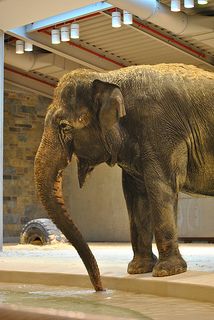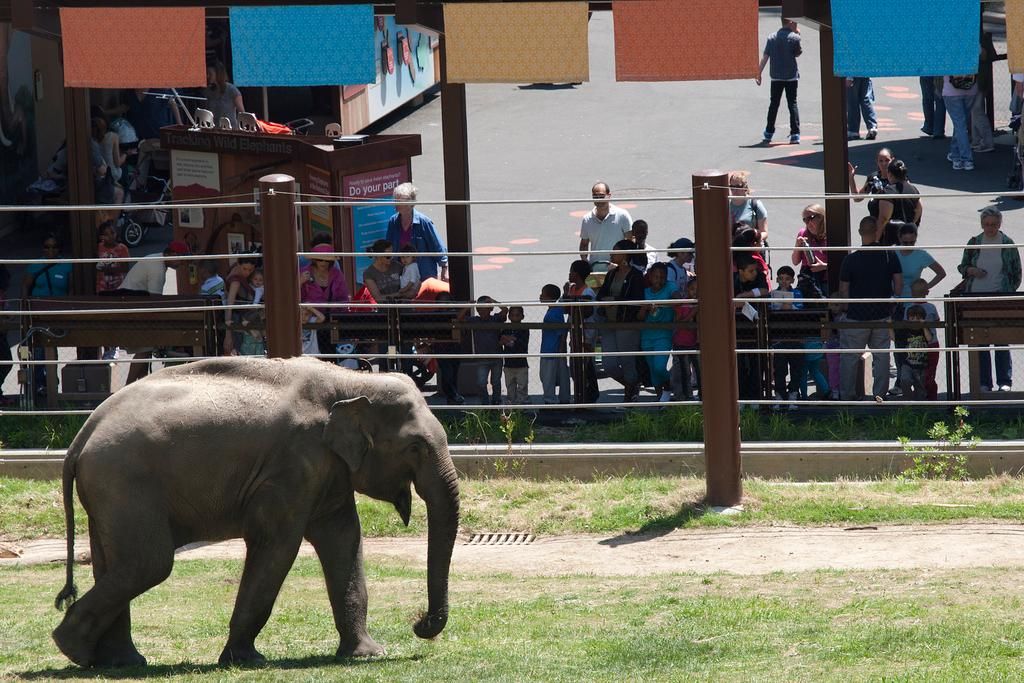Look Out! Look Out! Elephants Get New Digs
The Elephant Community Center, the newest addition to the National Zoo’s “Elephant Trails” habitat, opens on Saturday, March 23
/https://tf-cmsv2-smithsonianmag-media.s3.amazonaws.com/filer/20130315035034shanti-crop.jpg)
Shanti the elephant has been having the time of her life. In 2010, the National Zoo opened the first phase of Elephant Trails, a major renovation of its elephant habitat, and zookeepers allowed her to be the first to play in her home’s expanded yards. She was ecstatic. Now, the Zoo is set to open a new Elephant Community Center on Saturday, March 23, and Shanti again got a sneak preview.
“Shanti just loved every single moment of it,” says elephant manager Marie Galloway. “She came in and she explored every single nook and cranny.”

The Elephant Community Center is the last major addition to the Zoo’s seven-year, $56 million renovation project, which vastly expands the roaming space, and also adds a barn and an exercise and research outpost for the Zoo’s three Asian elephants. (The exhibit now spans 8,943 square meters.) Inside the community center, elephants socialize and are cared for with state-of-the-art facilities, including a heated, sand-covered floor and a wading pool with a shower that can be activated by the elephants themselves. Interactive exhibits in the center showcase the Zoo’s research and explain the elephant’s physical traits, cognitive abilities and behaviors.
“One of our major goals of this project is to create an environment where elephants can live as a more natural social unit,” Galloway explains. “That means creating a multi-generational related herd of elephants, and comfortable space for more independent males to live here as well. We want to grow a family, not just open up an exhibit and fill it with elephants.”
Versatility is key to encouraging this socialization, Galloway says. The new environment is customizable and varied, with doors that open and close to modify spaces and exits to outdoor areas from every indoor facility. The design aims to provide elephants with as many options as possible to meet their social needs; they can get out of each other’s sight, be in sight of each other, but not in each other’s space, or cuddle up close if they are elephant best friends.
“You have to treat every single one of them as an individual. We want to be able to make everybody comfortable no matter what their social preferences are,” Galloway says.
Ultimately, she hopes that more comfortable elephants will give Zoo visitors a better elephant-watching experience. Visitors will need to spend more time tracking down the elephants in their expanded environment, but Galloway thinks what they find will be worth the extra effort. “If the elephants are enjoying themselves, the people are enjoying themselves,” she says.

Enjoyment, though, she stresses, is not the exhibit’s only end. The National Zoo is regarded as a leader in elephant research, particularly on Asian elephants, which are both less studied and far more endangered than their African relatives. (Around 30,000 to 50,000 Asian elephants are alive today, compared to around 400,000 African ones.) Elephant Trails carries a strong message about the problems elephants face and what visitors can do to protect them. While the Zoo’s staff has always made an effort to convey this message, Galloway says, the new community center uses its displays to call visitors to action: “You can get that message without seeing a single person or elephant.”
But don’t miss seeing the elephants! Here are more pictures of them:



/https://tf-cmsv2-smithsonianmag-media.s3.amazonaws.com/accounts/headshot/paul-bisceglio-240.jpg)
/https://tf-cmsv2-smithsonianmag-media.s3.amazonaws.com/accounts/headshot/paul-bisceglio-240.jpg)